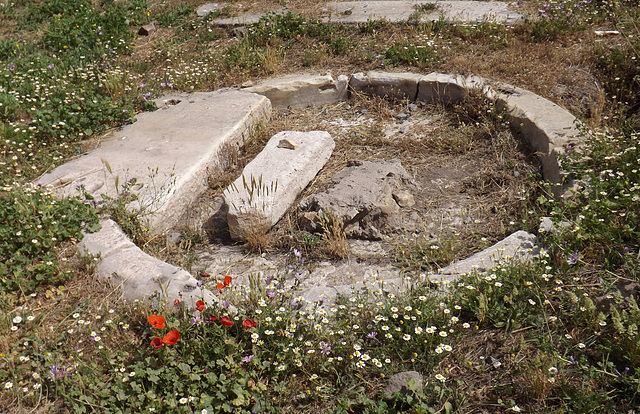 | ||
Similar Vulcanal, Umbilicus urbis Romae, Portico Dii Consentes, Lacus Curtius, Milliarium Aureum | ||
Shrine of venus cloacina
The Shrine of Venus Cloacina (Sacellum Cloacinae or Sacrum Cloacina) — the "Shrine of Venus of the Sewer" — was a small sanctuary on the Roman Forum, honoring the divinity of the Cloaca Maxima, the spirit of the "Great Drain" or Sewer of Rome. Cloacina, the Etruscan goddess associated with the entrance to the sewer system, was later identified with the Roman goddess Venus for unknown reasons, according to Pliny the Elder.
Contents
History and legend
The Etruscan deity Cloacina may well have been associated originally with the small brook that later became the city's Cloaca Maxima, but the Shrine of Venus Cloacina is first mentioned by the playwright Plautus in the early second century BC. It was located in the Forum in front of the Tabernae Novae ("new shops") and on the Via Sacra. The Tabernae Novae were replaced by the expanded Basilica Aemilia in the middle Republic (179 BC), but the Shrine was preserved. The round masonry Shrine probably dates from this construction (or major remodeling).
Legend, however, ascribes the origin of the Shrine to the period of the Sabine king Titus Tatius (8th century BC), during the reign of Romulus. It was also according to legend that the father of the virtuous Verginia, a butcher in one of the stalls of the Tabernae Novae, came out and stabbed his daughter rather than let her fall victim to the lecherous attentions of Appius Claudius in 449 BC. (This was said to have occurred on the future site of the Shrine.)
Description
Coins minted during the Second Triumvirate (ca. 42 BC) by a moneyer named Lucius Mussidius Longus give a fairly clear visual representation of the shrine. They show a round sacellum (small, uncovered shrine) with a metal balustrade. The scant archaeological remains uncovered between 1899 and 1901 (round travertine substructure, marble rim, diameter 2.40 meters) conform nicely to the pictures on the coins. In his Natural History (77-79 AD), Pliny the Elder refers to signa Cloacinae, which were evidently the two statues shown on the coins and perhaps some other, unidentified objects. One of the statues is holding or waving an object (possibly a flower). Each statue has a low pillar with a bird on it (flowers and birds were well known attributes of Venus). It is not known why there are two statues.
Religious significance
The Romans believed that a good sewage system was important for the future success of Rome, as a good sewer system was necessary for physical health. Romans cultivated Cloacina as the goddess of purity and the goddess of filth. Cloacina’s name is probably derived the Latin verb cloare (“to purify” or “to clean”), or from cloaca (“sewer)”.
